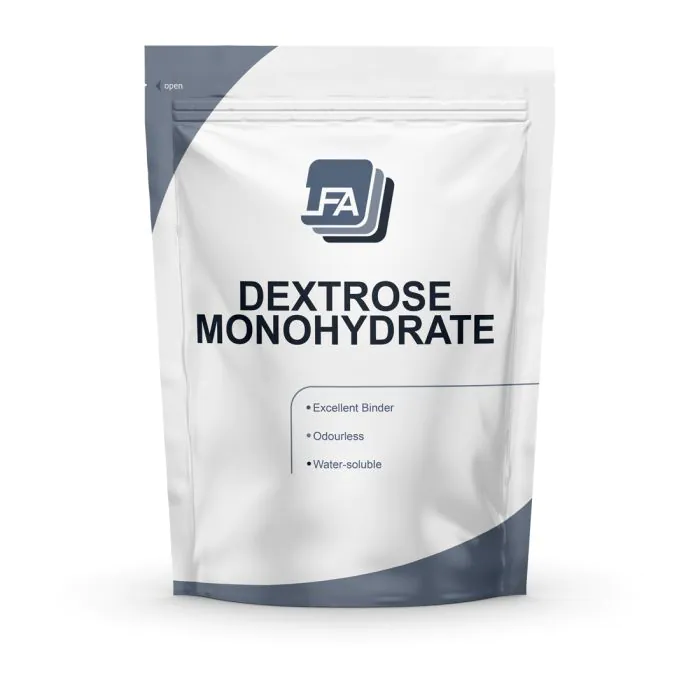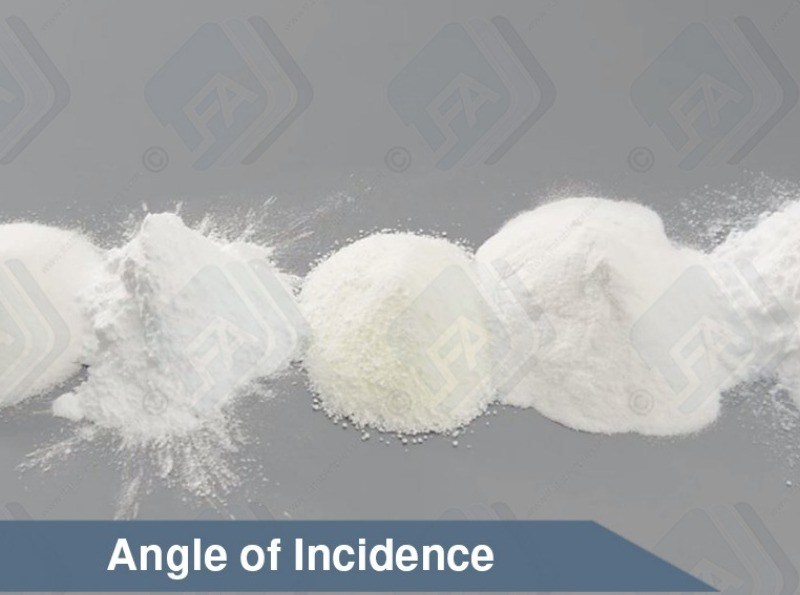デキストロース一水和物は、正にお客様が求めている商品かもしれません。さまざまな目的の選別はお客様に対して有益な材料にするのに役立ちます。デキストロース一水和物をもっとよく見てみると、お客様の製品にふさわしい甘味料であることがわかるでしょう。
デキストロース一水和物の特長:
- 無臭
- 優れた結着性
- 水溶性
- 肉眼で見える
- 白色, 結晶性粉末
- 水で溶けやすい
錠剤において、デキストロース一水和物は甘味料として機能します。デキストロース一水和物は、グリコーゲン、でんぷん、セルロースで構成されます。正に一般的な砂糖のようなものです。お客様が受け取るデキストロースは粉状です。それは室温で結晶形です。デキストロース一水和物は水に溶け、エタノールでは難溶性です。
デキストロース一水和物は、体に水分と糖分を供給します。1グラムあたり4calで9%の水分を含有しています。低血糖、目まいや高熱を患っている人がよくデキストロース一水和物を服用します。錠剤の場合、これは使用者へエネルギーを供給します。医薬や食品産業で使用されます。デキストロース一水和物は、「糖分を減らし」、多くの加工食品に使用されています。食品に作用する成分は、錠剤へも適用できます。デキストロース一水和物は、錠剤の品質を改善でき美味しさを提供します。経済的な金額で定期的に安全に摂取できます。
デキストロース一水和物は、製造工程を改善します。でんぷんの加水分解によって生まれたただの糖分です。コーンスターチから生まれたグルコースはデキストロース鎖を構成する鎖です。加水分解がその鎖を分断してまとまったデキストロースを作るワークプロセスです。これを行う一般的な方法は、アミラーゼという酵素ででんぷんを処理するか酸で処理するかになります。これらのプロセスは、実際自然に起きるプロセスを真似ています。体内ではでんぷんの消化を口内の唾液かアミラーゼ酵素で始まります。生産者は自然なプロセスを取り、彼ら独自の方法でそれを再現します。
デキストロース一水和物は、人に彼らの食事で満足させる風味として提供されてきました。適切に使用したら、エネルギーや液体を提供することによって人を助けられるでしょう。消費者が期待する甘味料があれば、彼らは錠剤を服用しやすくなります。デキストロース一水和物は、その不活性により多くの配合で簡単に適合することができます。
| 名称 | 値 |
|---|---|
| CAS番号 | 5996-10-1 |
| 分子式 | C6H12O6 H2O |
| 外観 | 粉末 |
| 物理的状態 | 固形 |
| 保管方法 | 室温で保管 |
| 沸騰点 | 410.8 °C at 760 mmHg |
| 密度 | 1.54 g/cm3 at 25 °C |
| 分子量 | 198.17 |
Yes, it does not matter what age, size or sex the person consuming the products is. It is, however, important to check the intolerance data.
Yes, all of the excipients are safe for human or animal consumption. There are some precautions that should be taken when handling them and there are some people that might have intolerances to some of them. Information on this can be found in the products MSDS and Intolerance Data Sheet. This can be found in this section for every excipient.
Yes, there are all of them can be found in the intolerance sheets for each product. The intolerance sheets can be found here: https://www.lfatabletpresses.com/product-data
FFFFFF Yes, we have bulk pricing for all of our excipients, and these can be found in this section. We offer bulk in 500 kg, 1 ton, 2 ton and 5 ton lots. The prices are set on these quantities as these are the amounts that will fit on pallets.
Yes. CoA stands for Certificate of Analysis this is also known some times as an MSDS (Material Safety Data Sheet) all of the information contained in a CoA is inside the MSDS for every LFA product which is emailed to you after purchase.
Yes. There are two things at play here. You can get hygroscopic and hydrophobic excipients. Hygroscopic means that they take on water quickly, while hydrophobic means that they repel water.
There are products know as supper disintegrants. These products help the breakdown of tablets. At the moment LFA does not sell any supper disintegrants.
Magnesium stearate is hydrophobic this means that it will slow the breakdown of a tablet.
However, it is used in such small amounts that most of the time it will not make a difference to our customer's products. If they would like to be sure then they should conduct what is known as a disintegration test.
Firmapress - 2 years form batch date.
Dextrose - 3 years from batch date.
Dicalcium Phosphate - 3 years from batch date.
Microcrystalline Cellulose -
Magnesium stearate -
Lactose - 2 years from batch date.
Silica Dioxide - 2 years from batch date.
here are 6 steps that should be followed as a general rule of thumb when cleaning contact surfaces that have come into contact with powders:
Dry Clean - First you need to remove as much of the dry powder as possible. You can do this using a hover/vacuum. Make sure that the vacuum you are using has a filter good enough to handle fine dust.
Wet Clean - Next you need to perform a wet clean. This can be done with warm water and soap or if available an ultrasonic cleaner.
Rinse - Next you need to rinse off any soap with potable water (drinking water). You do not have to do this if you used an ultrasonic cleaner in the last step. It is important to ensure that all parts are thoroughly dried immediately after washing to avoid any rusting.
Sanitise - Next you need to sanitise the surface. This step is recommended by the FDA. There are a number of sanitising solutions available designed to be applied and left on.
Lubricate - You now need to lubricate any parts that require it. This should be with the appropriate grade oil or grease considering your use and greasing chart. Store - Finally store any of the parts in a cool dry place. If you are storing them on the machine then make sure the machine is in a temperature controlled environment with low humidity.
Dextrose - approx 100 mesh
Dicalcium Phosphate - approx 100 mesh
Microcrystoline Cellulose - approx 120-200
Magnesium sterate -
Lactose - 80 mesh
Silica Dioxide -
Firmapress - 100-200 mesh
Dextrose - Sweetener, binding agent, good for chewable tablets or candy.
Microcrystalline Cellulose - Binder, filling agent. Good at binding tablets and making them bigger. It can also be used as a filler for capsules.
Magnesium stearate - Dry Lubricant. This stops products from getting stuck to the tooling. It can also help with powder flow issues and caking issues.
Lactose - Binder, sweetener and bulking agent. It has a large mesh so it flows well but most people do not like it because of the intolerance issues.
Silica Dioxide - Flowing agent. This assist powders in flowing smoothly through the machines. It also helps with cacking issues where powders get stuck to the machine.
Firmapress - 2 years form batch date.
Dextrose - 3 years from batch date.
Dicalcium Phosphate - 3 years from batch date.
Microcrystalline Cellulose -
Magnesium stearate -
Lactose - 2 years from batch date.
Silica Dioxide - 2 years from batch date.
If your product does not bind well then we would recommend using MCC. This can be used in any % the limiting factor is the size of the tablet.
If the amount of MCC you would have to use would be too much or if you do not want to use MCC then you have 3 other options: Ask your supplier for a directly compressible or tabletable grade of your product. Spray dry your product. Wet granulate your product.
If your product is sticky then you will need to add a dry lubricant to your mix. For this, we recommend magnesium stearate.
We do not recommend that you add more than 1% to the mix as more than this can cause capping. If your product is still sticky at this point then we would recommend looking into granulation.
If your product or API is clumpy then you will need to add an anticaking agent. For this, we recommend silicon dioxide. We only recommend adding a maximum of 2% of this to the mix







